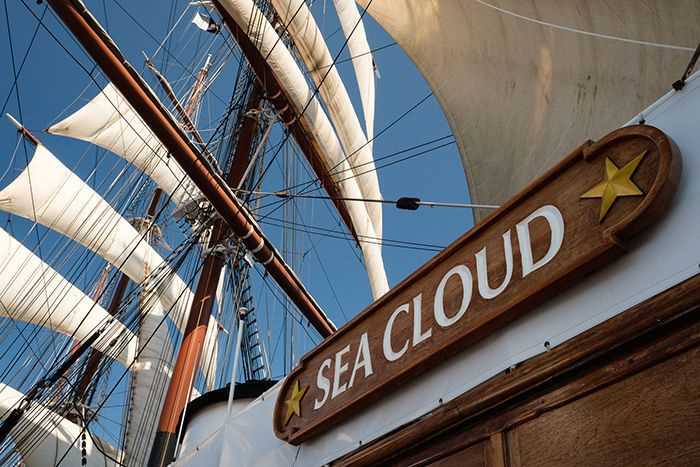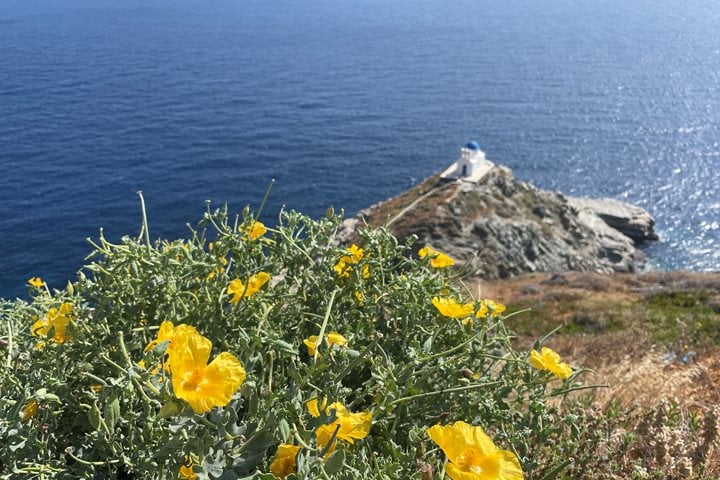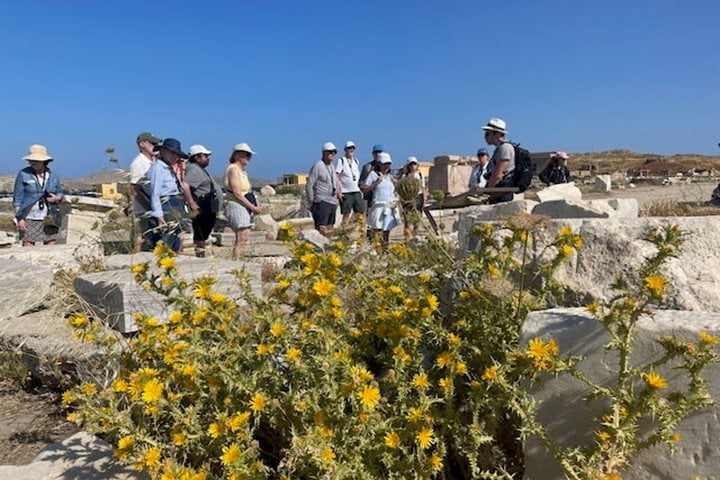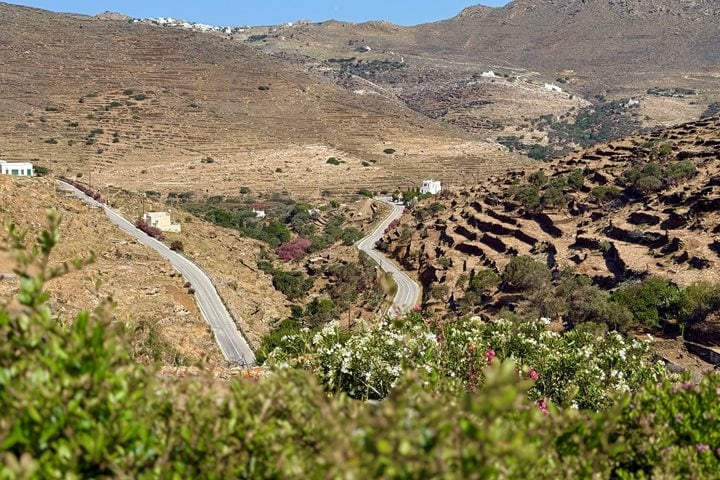The sun rose at 7:01 a.m. in an azure sky with some scudding cumulous clouds on the horizon. The wind was 16 knots from the port. Our National Geographic staff was introduced and their backgrounds provided. At 9:30, the sailors went to the sail stations and the captain gave a step-by-step introduction to what sails were being hoisted and their function. Sea Cloud carries an incredible amount of sail—about 3,000 square meters (32 thousand square feet)—and can do almost 12 knots under optimum conditions. That speed is remarkable considering that she is about 2,500 tons. It’s amazing to watch the sailors confidently climb up the masts—especially the main mast, which is 178 feet high. Sea Cloud is stunningly beautiful under sail.
We enjoyed a very informative introduction to photography, particularly useful tips photographing with the sun and light reflected off the sea. We had our first lunch on the Lido Deck and were amazed by how the crew managed to set up such a fabulous feast, carrying all the food to the Lido from two decks below. The pastry chef made fabulous Greek sweets for dessert.
Afterward, there was a talk on the earliest Greek language, Linear B, which was written from approximately 1475 to 1300 BCE. Despite having only about 200 years of written tablets, the spoken language continued before and after this period. The Greek alphabet as we know it today was borrowed by Greek traders on the island of Cyprus who were trading with the Phoenicians, whose language was Semitic.
The sails were reefed at 4:30 and guests helped with the line handling, even going up onto the foscle deck to help reef in the large jib. We dropped anchor at 6:08 off the isle of Ios, directly out from the brilliant white village of Varvaronisi.
It was a beautiful evening on the Lido Deck with a soft wind and a bit of sun still lingered in the western sky. Homer’s “wine dark sea” surrounded us as we enjoyed the captain’s welcome cocktail party and dinner.









